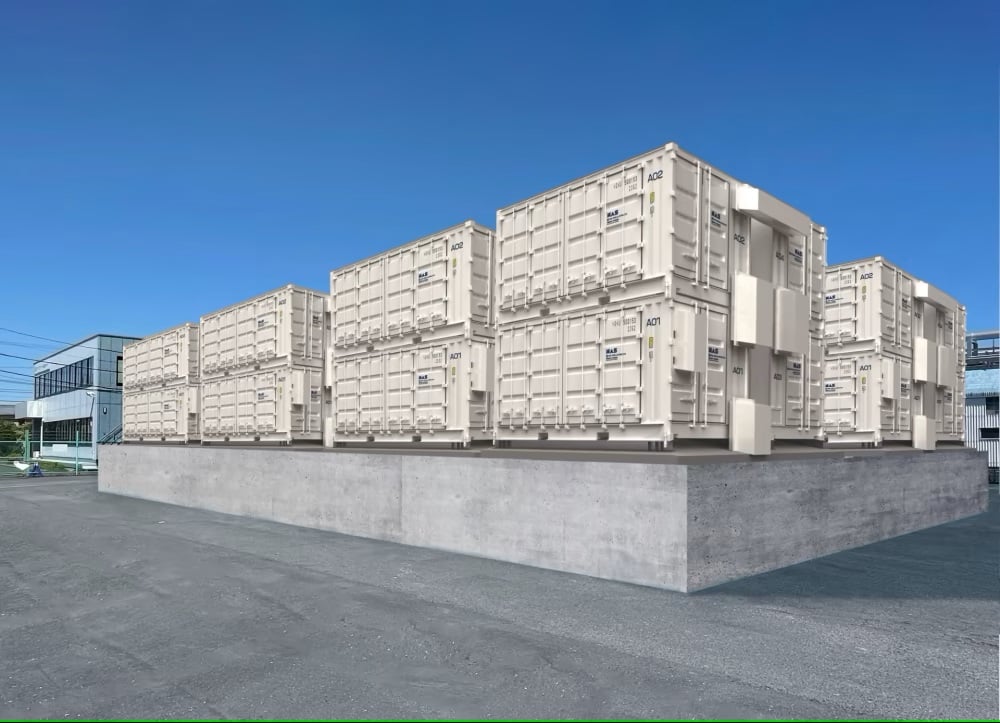
Japan’s NGK Insulators will supply a large-scale battery storage system based on its proprietary sodium-sulfur (NAS) technology to a project in the country’s Shizuoka Prefecture.
The manufacturer said yesterday that it has received the order from Sala Energy, a utility company serving both residential and commercial and industrial (C&I) customers. Sala Energy intends to use the energy storage asset for trading energy in Japan’s power markets.
Enjoy 12 months of exclusive analysis
- Regular insight and analysis of the industry’s biggest developments
- In-depth interviews with the industry’s leading figures
- Annual digital subscription to the PV Tech Power journal
- Discounts on Solar Media’s portfolio of events, in-person and virtual
The NAS battery is a high temperature electrochemical energy storage device which operates at 300°C, with a sulfur anode and sodium cathode and a proprietary ceramic electrolyte. It is designed to not suffer degradation through about 15 years of use, even with daily cycling at 100% depth of discharge.
The technology is marketed as suitable for medium to long-duration energy storage (LDES) applications, and NGK has sold more than 5GWh of NAS batteries to projects around the world over 20 years, for applications that include renewable energy integration and grid services as well as C&I and microgrid energy systems.
The system sold to Sala Energy will be around 6-hour duration, with capacity given as 69.6MWh in a release from NGK and Sala Energy noting its output would be 11.4MW in a separate release issued earlier this month to the Japanese market.
The project will be the first grid-scale battery energy storage system (BESS) in Shizuoka Prefecture, which is a couple of hours’ drive southwest from the capital Tokyo. Connected to a Sala Energy substation in Shizuoka’s Hamamatsu City, it will be called Sala Hamamatsu Storage Station and marks the utility’s first entry into the energy storage market.
That market has opened up considerably in recent months, after regulators amended laws to enable more transparency in the energy trading market, the eligibility of battery storage to play into the capacity market, and adjustments in legislation to allow standalone energy storage facilities to connect to the power grid.
There are also subsidies available via the Japanese Ministry of Economy, Trade and Industry (METI) covering a portion of the capital cost of projects selected for the ministry’s programme to support the promotion of energy storage.
Energy-Storage.news spoke earlier this year with the head of energy storage at developer Pacifico Energy, which in June became the first company in Japan to trade energy from batteries, from two 2MW/8MWh projects. Pacifico Energy’s Mahdi Behrangrad said the business model required stacking up revenues from a number of different streams to make it viable, which can be complex, but rewarding.
Sala Energy put its entry into the storage business alongside other initiatives such as solar-plus-storage power purchase agreements (PPAs) for residential and C&I customers and more detailed emissions reporting, in the utility’s pathway plan to carbon neutrality by 2050 – in line with the Japanese national policy target.
Construction has begun on the NAS battery installation at Hamamatsu City, and it is expected to be in commercial operation by Spring 2026.
It’s the second deal NGK announced this week. On Monday, the company said a 250kW/1,450kW NAS battery system will be deployed at Hungary’s Centre for Energy Research.
The demonstration system, ordered by engineering company Duna Center Therm Uzemi Szolgaltato, will be used to evaluate where best to put energy storage on the grid in the European country. NAS technology was selected due to its large energy capacity, ability to discharge over long durations and peak shift solar energy, as well as their track record in the field.
The device’s designs and features also meet the requirements for national laboratory use in terms of safety and monitoring systems.
Other recently-announced projects for NGK in what has been a busy year or so for its NAS battery division, include an 8-hour duration unit being commissioned in June at a demonstration project in South Korea, the company’s first Australian deployment, at a mining site, and an order for another 11.4MW/69.6MWh system in Japan, to be installed at a former LNG terminal owned by utility Toho Gas.






